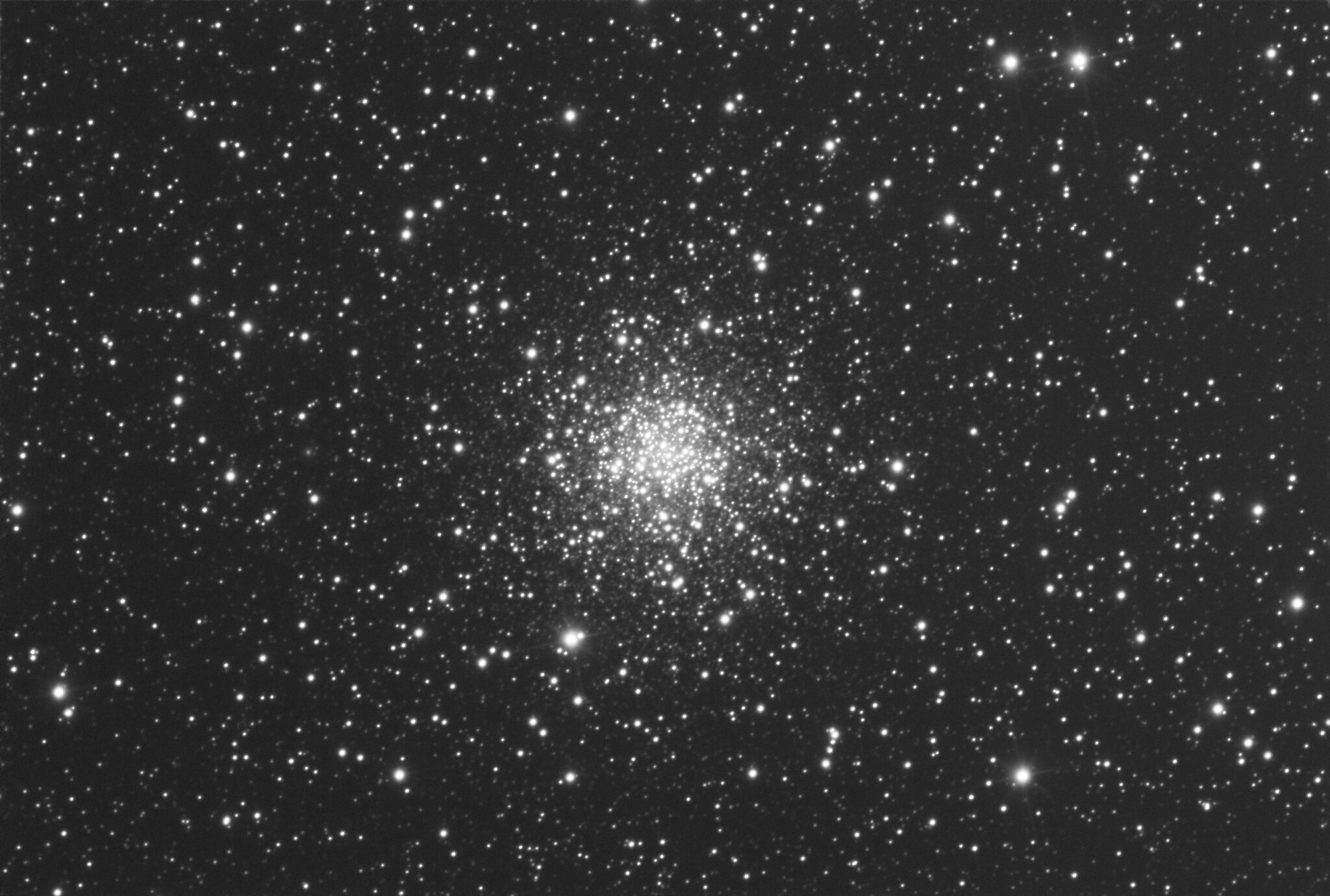Globular cluster M56 is a gorgeous object in Lyra the Lyre that anyone can observe with binoculars or a telescope.
- M56 is a globular star cluster near Vega, easily found with basic stargazing equipment.
- It’s magnitude 8.3 and spans 8 arcminutes across the sky.
- Even small telescopes reveal the cluster’s central stars.
- Larger telescopes (8 inches or more) show many more fainter stars.
Already high in the east an hour after sunset is the constellation Lyra the Lyre, easy to locate thanks to its brightest star, magnitude 0 Vega. Tonight, we’re looking southeast of this star at M56, an 8th-magnitude globular cluster in near the border of Lyra and Cygnus. In fact, one of the easiest ways to locate M56 is to slide 3.8° northwest of Beta (β) Cygni, the famous colorful double star Albireo. As this region is rising tonight after dark, M56 appears directly above Albireo.
M56 shines at magnitude 8.3 and spans about 8’ on the sky. Although it doesn’t have a particularly dense or bright core, it is still easy to spot and enjoy, even with beginner’s equipment. You should be able to see the inner 3’ visually, standing out amid the scattered stars of the background, which lies near the plane of the Milky Way. More advanced observers with larger scopes (8 inches or more) can pick up many more fainter stars farther from the core, as well as increase the number of suns visible in the center of the cluster.
Sunrise: 5:42 A.M.
Sunset: 8:29 P.M.
Moonrise: 10:05 P.M.
Moonset: 7:17 A.M.
Moon Phase: Waning gibbous (96%)
*Times for sunrise, sunset, moonrise, and moonset are given in local time from 40° N 90° W. The Moon’s illumination is given at 12 P.M. local time from the same location.
For a look ahead at more upcoming sky events, check out our full Sky This Week column.
